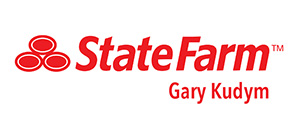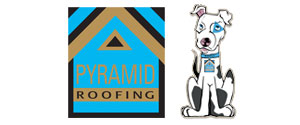- Do you subscribe to Dharma Dog Training’s Newsletter? You should.
- A Unique Campaign from The Humane Society of the United States
- Rabid bats in Omaha- Stay safe, prepared with these tips
- Springtime Activities in Omaha
- Mill Dog Monthly from Bailing Out Benji
- World Spay Day, Legislative Alert in Nebraska
- Attend the Nebraska Rescue Council’s monthly meeting this Saturday
- Five Hard-to-Ignore Reasons to Adopt!
- Paws in Pink to Benefit Breast Cancer Foundation
- VCA, Inc. Acquires MidWest Vet Specialists from Kansas State University
Safety Precautions Of Raw Dog Food Diet

Feeding raw food for dogs is becoming increasingly popular among pet owners. A raw food diet is composed of ingredients that are not processed, which mainly include meat, bones, organ meats, fruits, vegetables, and even raw eggs. Raw food dogs has been linked to lesser allergies, improve digestive functions and help with chronic illnesses. Despite these, there are endless arguments regarding its benefits, effects, and safety.
Raw feeding is not something that you, as a pet owner, should fear. However, there are precautions you need to take, just like how you would prepare food for your family.
Here are the important safety precautions of raw dog food diet:
- Mind your ingredients
A balanced diet for your fur baby should consist of the right amounts of protein, fat, and carbohydrates. One advantage of the raw dog food diet is that you know what goes in the food and you can take steps to make sure that it is safe for your pet and in accordance to its health condition.
When feeding your dog, it’s best to give it raw food and natural treats like those provided by Barking Good.There are also options to prepare homemade diets, and there are many resources where you could find recipes suitable for your pet. Here are a few things to take note of:
- It’s best to consult your vet before even trying to transition into raw feeding to make sure that there won’t be any digestive problems.
- Many types of food are harmful to dogs, even if humans find them delicious. Avoid adding avocados, grapes, Macadamia nuts, onions, garlic, and walnuts, among many others, into your recipe.
- Some ingredients that are good for your pet are muscle meat still attached to the bone, organ meat, spinach, broccoli, and pumpkin. If you have a smaller dog, raw bones can be ground to avoid teeth or oral damage.
- Handle food with care
One of the reasons why many are against raw food diet is because of the bacteria like Salmonella and E. Coli present in meat that won’t be eliminated when it’s not cooked. Just like how you prepare meals for your family, it’s vital to handle raw dog food appropriately to avoid or lessen chances of illness not only for your dog but for you and your family members. Here’s a list of food handling tips to help:
- Wash your hands with soap and water for 20-30 seconds before and after handling dog food.
- Use stainless-steel bowls for feeding your dog because plastic or porcelain can be porous and trap bacteria and germs after some period.
- Use separate sponges for cleaning your dishes and your dog’s. There are colored sponges to help you differentiate which is which easier.
- Before you start preparing other food, wash your dog’s dishes and utensils with hot soapy water. Include washing or wiping countertops where you made the dog food with the same solution, and wipe it clean with paper towels instead of a sponge or cloth. You can also disinfect these surfaces with one tablespoon of bleach to one quart of water after.
- Separate raw meat with other food because there is a possibility of cross-contamination if you don’t. Choose air-tight, stainless-steel containers.
- Freeze raw meat until you are ready to use them. It’s recommended that your freezer is at -17˚C (0˚F) and your refrigerator at 4.4˚C (40˚F). Bacteria grow rapidly between 4.4˚C-60˚C (40˚F-140˚).
- Don’t thaw food in room temperatures like in sinks and countertop. You can thaw in the refrigerator or microwave instead.
- Immediately refrigerate or dispose in appropriate containers food that your dog can’t finish.
- Watch out for nutritional imbalance
Another precaution that you need to remember is to ensure that your dog gets balanced nutrition with his raw food. Unless a dog nutritionist prepares the recommendations, there is a risk that your dog can have nutritional imbalance. However, incorporating vitamins and minerals together with protein, fats, and carbohydrates can provide your pet’s dietary requirements. Here’s some guidance with giving raw dog food diet:
- Edible, raw bones, are those without the muscle, fat or connective tissue, and provide the right amounts of calcium and phosphorus without the need for supplementation. Some sources are turkey necks and backs, chicken or duck necks and backs, and beef ribs, among others.
- If you are not able to include bones in the diet, make sure that you include supplements for these minerals. At the same time, avoid feeding excessive bone to steer away from painful, hard stools and organ damage.
- Vegetables and fruits don’t have to be given daily but need to be given occasionally because it provides vitamins and nutrients. Some examples are asparagus, pumpkin, spinach, apples, carrots, cantaloupe, and watermelon. You can juice or steam vegetables before serving them so that your dog can absorb all the nutrients.
- It’s always best to vary the raw dog food diet so that you will need fewer supplements. Dogs also need minerals like iodine, selenium manganese and zinc and nutrients, including vitamins D and E, omega-3 fatty acids, and linoleic acid. It’s best to consult your vet for the supplements your dog needs.
- Dogs don’t need grains, but if you do offer them, make sure that you are giving whole grains like brown rice and oats.
- Don’t feed raw dog food diet when your dog has digestive problems or has a medication. These can decrease stomach acid that is needed to digest and protect its stomach from pathogens in raw meat.
Final thoughts
Raw dog food diet isn’t something pet owners should entirely steer clear from. It can be beneficial for your fur baby as long as you consult your vet and take the necessary precautions when raw feeding. You have to know what ingredients go into their diet, handle meal preparation and storage with care to avoid bacterial contamination, and provide the nutritional requirements your dog needs to stay healthy and even trim your vet bills.
Latest News
-
3 Tips for Pet Owners on Training Rescue Dogs
Owning a rescue dog can take some work compared to...
- Posted 2 weeks ago
- 0
-
Choosing the Right Pet for Your Lifestyle
Are you thinking about getting a pet but unsure what...
- Posted 4 weeks ago
- 0
-
How to Make Your Rescue Pet as Comfortable as Possible
Did you bring home a new pet from a shelter...
- Posted 2 months ago
- 0
-
How Having A Pet Can Change Your Life
Having a pet can open your heart in ways that...
- Posted 7 months ago
- 0
-
How To Improve The Life Of Your Senior Pet
Do you have an elderly fur baby and want to...
- Posted 7 months ago
- 0
-
Springtime Activities To Enjoy With Your Furry Friends
Are you preparing for warmer weather and want some ideas...
- Posted 8 months ago
- 0
-
Pros And Cons Of Microchipping Your Pets
Have you considered whether your pets should be microchipped and...
- Posted 9 months ago
- 0


















You must be logged in to post a comment Login